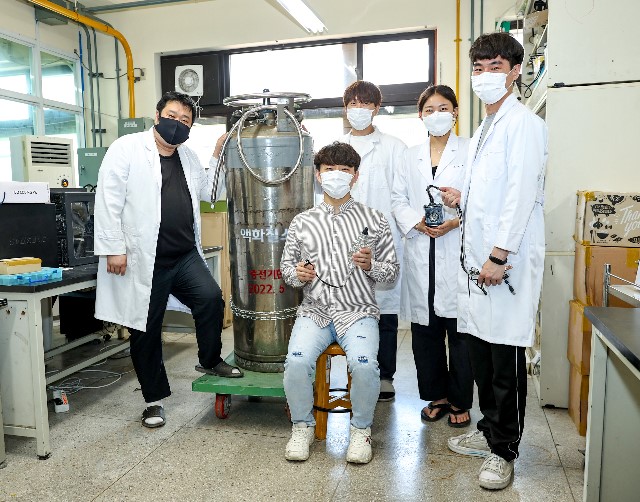YU Start-up Develops ‘Camera Technologies for Monitoring Extremely Cold Environments’ N
No.89356- Writer pr
- Date : 2021.07.12 15:34
- Views : 9133
Results of technological advancement of ‘Material Solution Park’, a start-up by Professor Park No-geun of the School of Materials Science and Engineering
Possible to observe dust smaller than human hair at extremely cold temperatures such as liquid hydrogen and in outer space
High industrial value as it can be used in various ways such as for inspecting the safety of liquid hydrogen storage and transportation equipment

This device was the outcome of the technological advancement research of ‘Material Solution Park’, which is a YU faculty start-up. It has technological perfection that can clearly view dusts smaller than human hair inside of extremely cold liquid refrigerants.
Professor Park, who is the president of Material Solution Park, explained, “In liquid refrigerant environments at extremely cold temperatures used to have large quantities of bubbles due to the boiling of liquid refrigerants, similar to that of water boiling in a kettle. The bubbles made images in front of the camera blurry.” He continued saying, “We developed a new iron material alloy called high-entropy alloy to minimize the bubbles from forming. Through the phase change of new materials and novel welding methods, we procured phase stability even during heat impact and collision at extremely cold temperatures. Through this, we were able to find the method for acquiring the best images.”
Through this study, it has become possible to film high quality images even at extremely cold temperatures such as in space like the moon (-80 degrees) and Mars (-143 degrees), as well as in liquid natural gas (LNG, -162 degrees), liquid nitrogen (-196 degrees), and liquid hydrogen (-253 degrees).